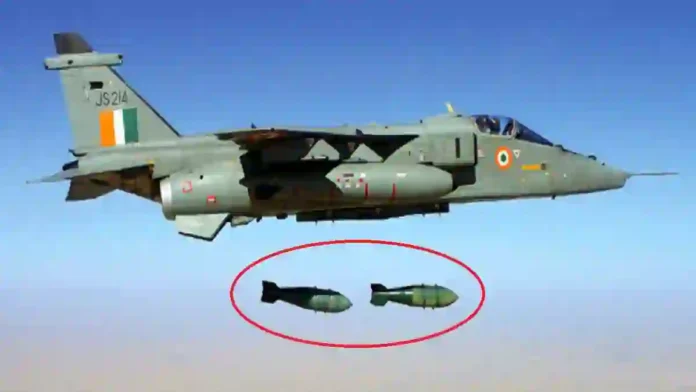The Indian Air Force (IAF) is set to equip its Su-30MKI and Jaguar fighter jets with SAAW missiles developed by the DRDO. These missiles are capable of hitting targets over 100 kilometres away. The Defence Ministry is expected to take up the proposal soon, as the focus on long-range precision weapons continues to grow. IAF will upgrade its strike capabilities by acquiring an advanced, satellite-guided version of the Indigenous Smart Anti-Airfield Weapon (SAAW). Developed by the Defence Research and Development Organisation (DRDO) at the Research Centre Imarat (RCI) in Hyderabad, the SAAW is a 120 kg class precision-guided glide bomb designed to destroy critical enemy airfield infrastructure, including runways, bunkers, radars, taxi tracks, and aircraft hangars, with pinpoint accuracy at ranges exceeding 100 kilometers.
This new version of the SAAW will be integrated across almost the entire IAF fighter fleet, including the Su-30MKI, Jaguar, and is planned for future platforms like the Dassault Rafale and HAL TEJAS MK-1A
Read- Bharat Forge-Turgis Gaillard Pact: Strategic Push For Indigenous AAROK UAV Production In India
The weapon’s standoff range enables pilots to strike high-value targets from a safe distance, minimising exposure to hostile air defences and increasing mission survivability. Its design leverages satellite guidance for enhanced accuracy, and its lightweight construction allows aircraft to carry multiple units per sortie—Su-30MKI, for instance, can be equipped with up to 20-32 SAAWs using indigenous quad racks.
The SAAW’s development marks a major milestone in India’s push for indigenous, world-class weapon systems. Unlike traditional gravity bombs, SAAW’s precision and resilience against environmental factors make it a more reliable and cost-effective solution for neutralising fortified enemy positions. The weapon’s effectiveness was highlighted in recent Indian operations, such as Operation Sindoor, where standoff munitions played a decisive role in targeting Pakistani terrorist and military infrastructure.
Read- Tejas Mark-1A Fighter Jet: HAL Accelerates TEJAS MK-1A Production
The Defence Ministry is expected to review the IAF’s proposal for rapid induction of SAAW under the emergency procurement process, reflecting the urgency to bolster frontline capabilities amidst evolving regional threats. The weapon is similar in concept to those used in the Balakot airstrikes, underscoring its operational relevance and strategic impact.
The induction of the advanced SAAW will provide the Indian Air Force with a potent, indigenous, and high-precision standoff weapon, significantly enhancing its ability to conduct deep strikes against enemy airfields and infrastructure while maintaining the safety of its aircrews. This move not only strengthens India’s deterrence posture but also showcases the growing maturity of its domestic defence technology ecosystem.
Agencies




